AWS Solutions Architect Associate Certification
Designing for Security
Turning up Security on Database Services Part 6
In this article, we explore advanced methods to enhance security on AWS database services with a particular focus on immutability and time-series databases. We dive into Amazon Quantum Ledger Database (QLDB) and Amazon Timestream, discussing their security features, network integration, and performance insights.
Amazon Quantum Ledger Database (QLDB)
Amazon QLDB is a ledger database that captures every data modification with an immutable record, ensuring that no changes are ever lost or altered. At first glance, QLDB might appear similar to a blockchain, but it is designed solely as a tamper-proof ledger. For instance, if you update a value from 1 to 2, the history of that change is permanently recorded.
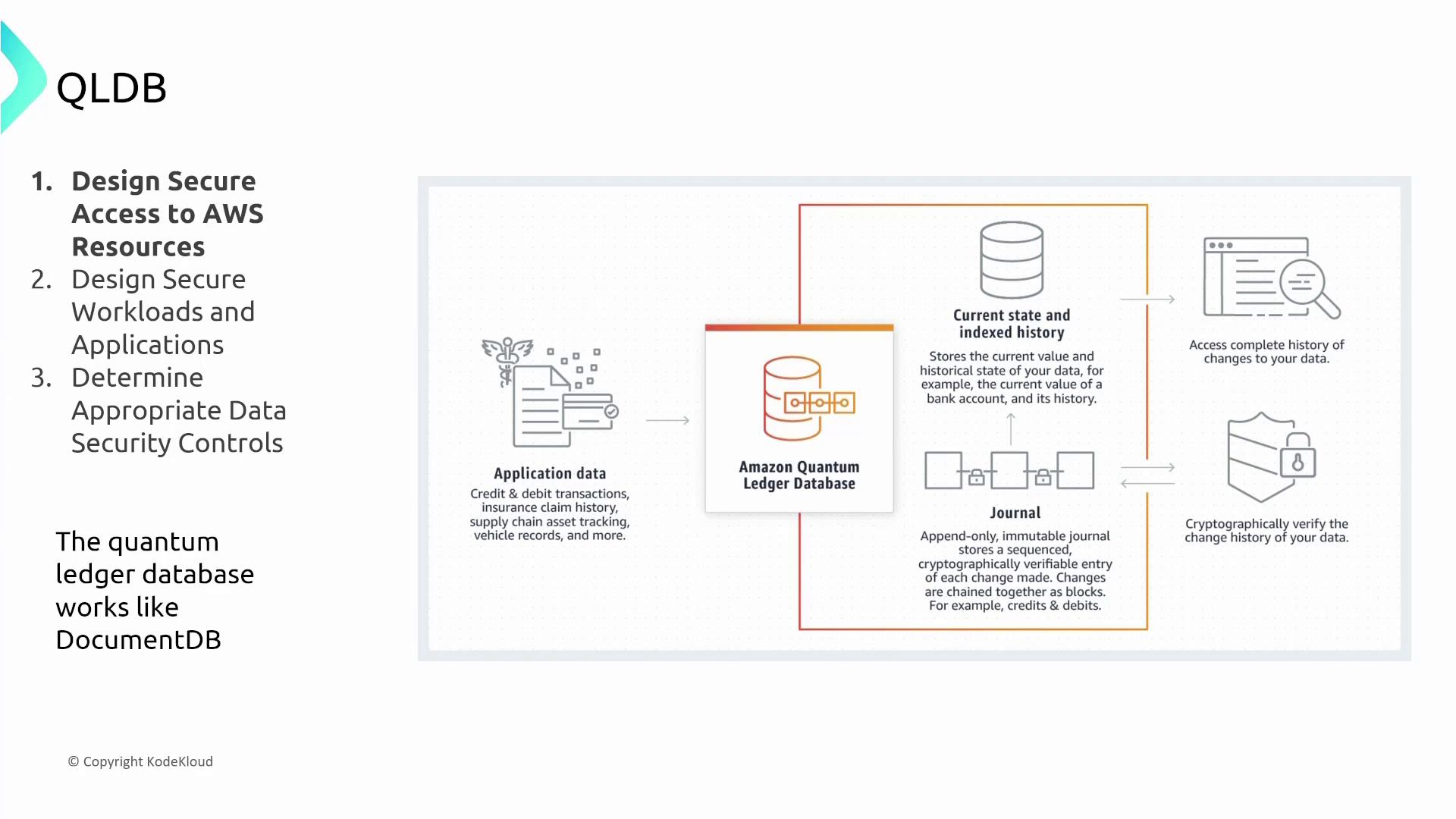
QLDB maintains a complete, tamper-resistant history of all modifications. This is particularly useful when an immutable record of transactions is required. For example, a logistics company might choose QLDB if they need SQL query support along with ACID properties—atomicity, consistency, isolation, and durability. It is important to note that while QLDB supports SQL-like queries, it is not intended for complex transactional queries like traditional relational databases.
Note
If you are looking for a traditional blockchain service, AWS offers separate options for that purpose. QLDB is strictly a distributed ledger database that provides cryptographically verifiable transaction logs in a centralized system.
For access management, QLDB integrates seamlessly with AWS Identity and Access Management (IAM), allowing you to assign roles and enforce granular permissions for specific ledger operations.
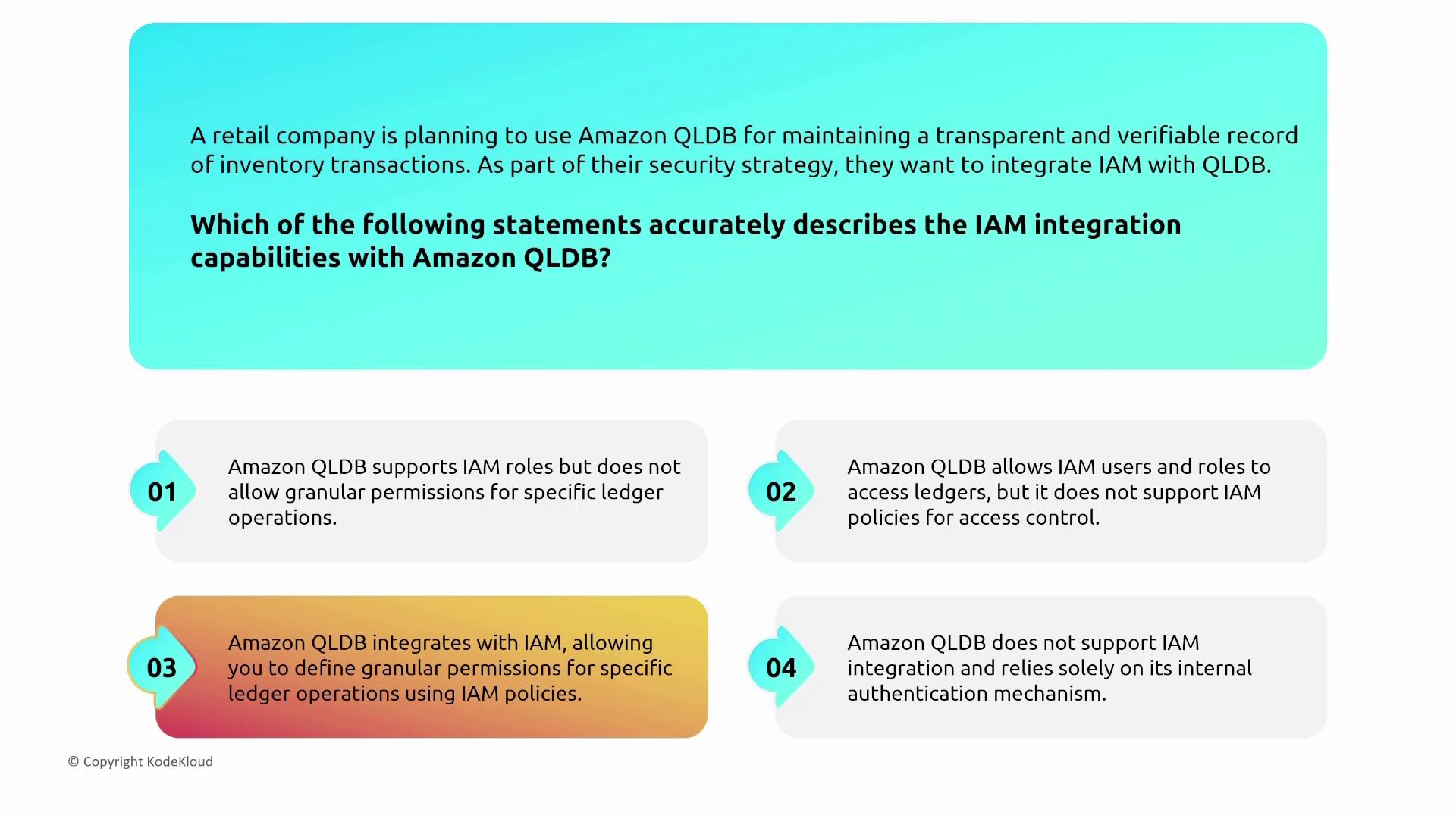
For network security, QLDB can be deployed within a Virtual Private Cloud (VPC) using a VPC endpoint. While the service itself does not attach a security group directly, the VPC endpoint applies standard firewall rules, providing robust network-level protection.
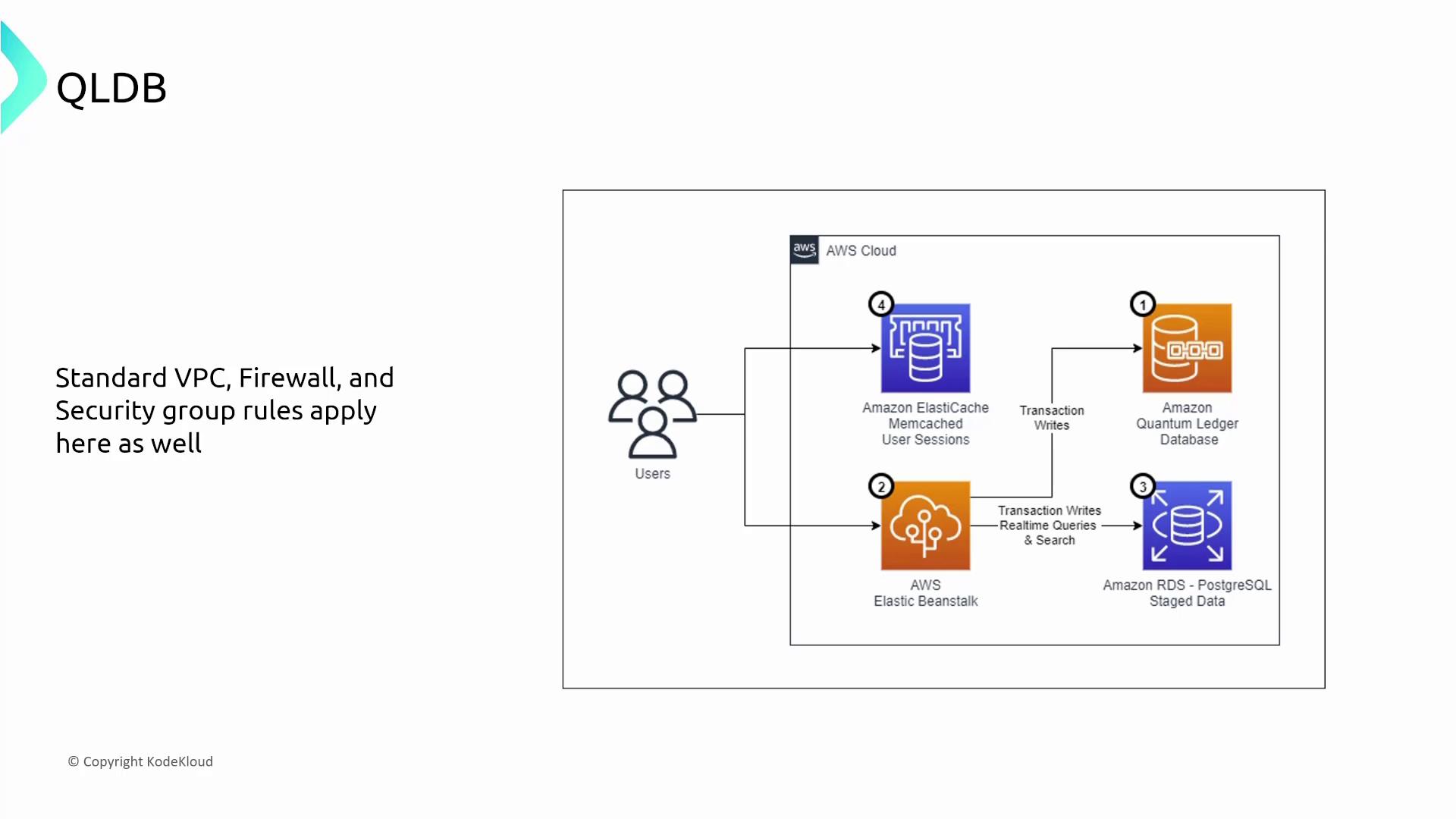
Encryption is enforced by default on QLDB for both data at rest and in transit, adding an extra layer of security.

Additionally, QLDB integrates with AWS CloudWatch and CloudTrail to provide detailed monitoring and an audit trail for API calls and system metrics.
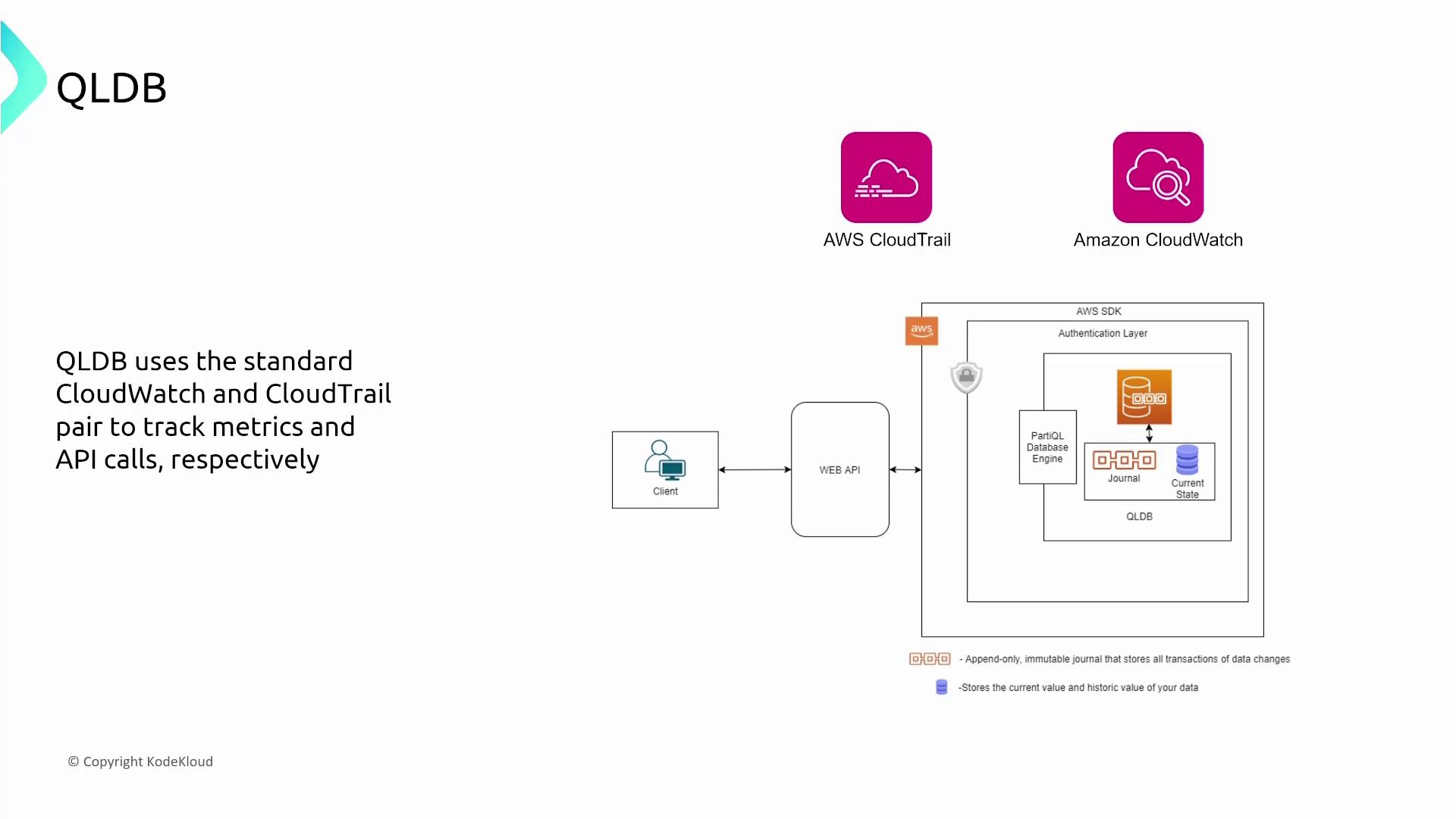
Amazon Timestream
Amazon Timestream is a serverless time series database designed to efficiently store, process, and analyze high volumes of IoT and real-time analytics data. Although Timestream allows data updates, it is optimized for sequential storage of time-series data.
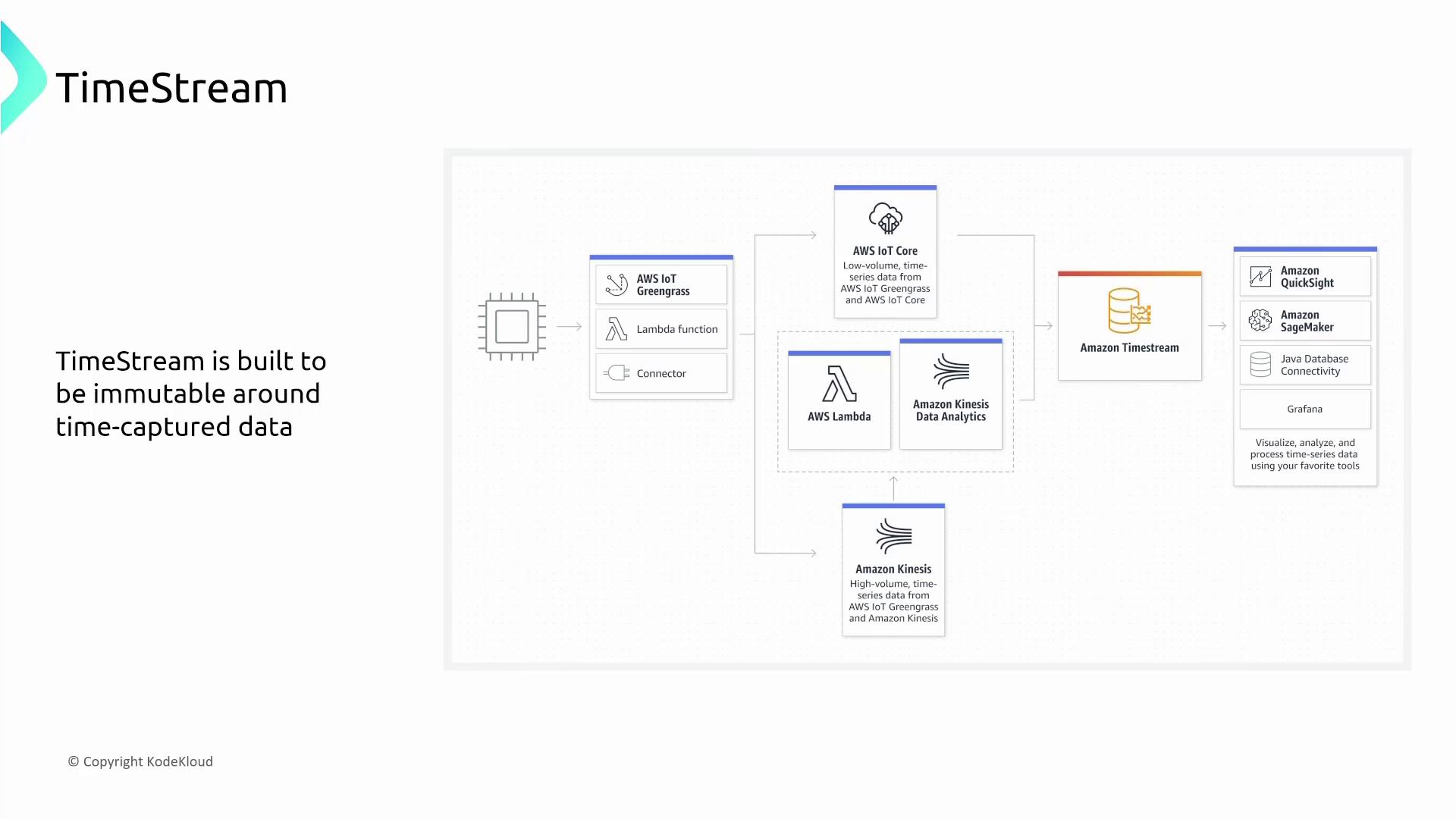
Timestream is ideal for IoT applications, capable of handling up to a trillion events per day, and does so at a fraction of the cost of traditional databases. The integration with IAM enables you to manage access through roles, enhancing overall security with fine-grained permissions.
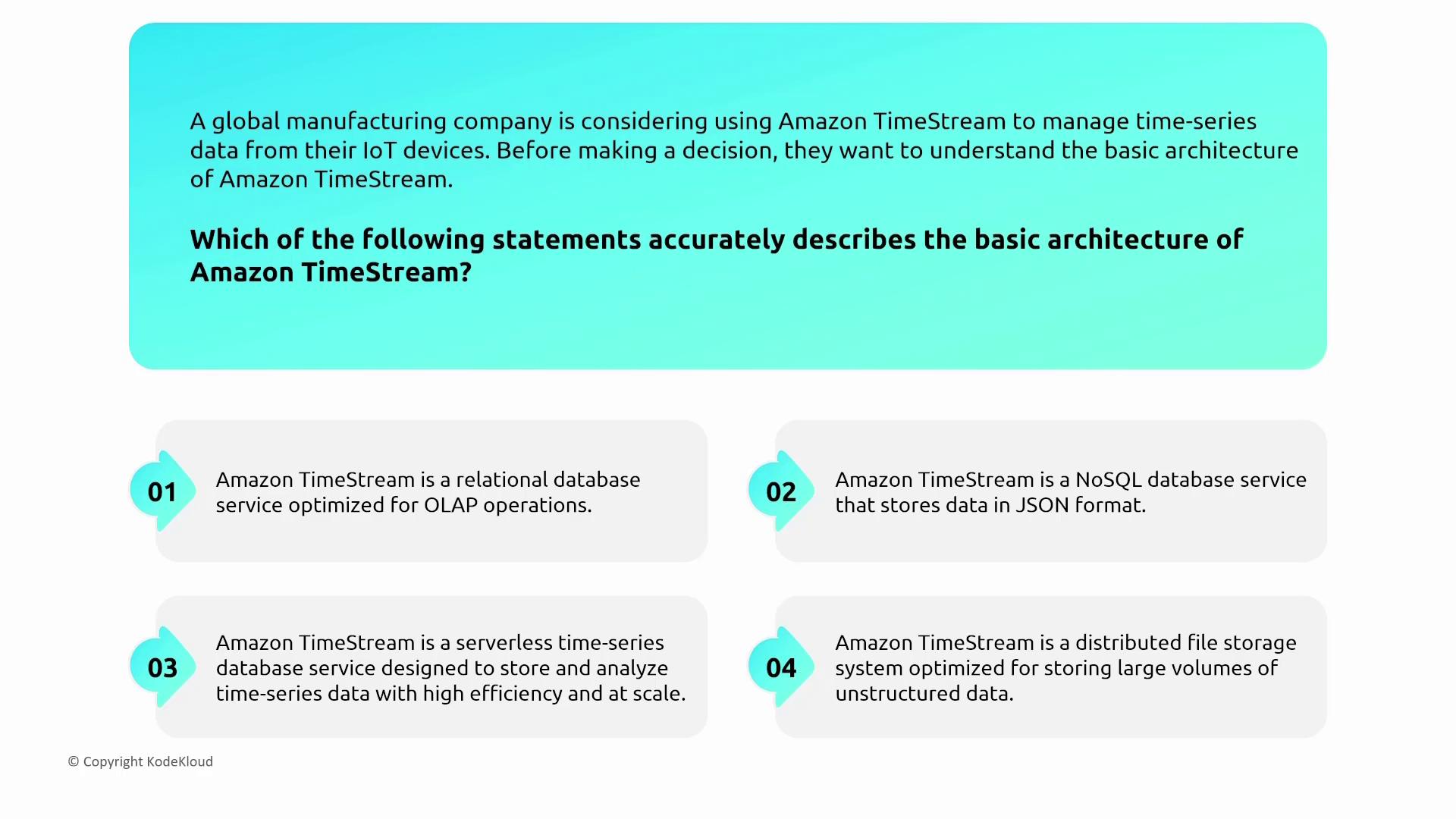
IAM integration in Timestream facilitates secure access control, which is essential when connecting with other AWS services such as TwinMaker or Lambda.
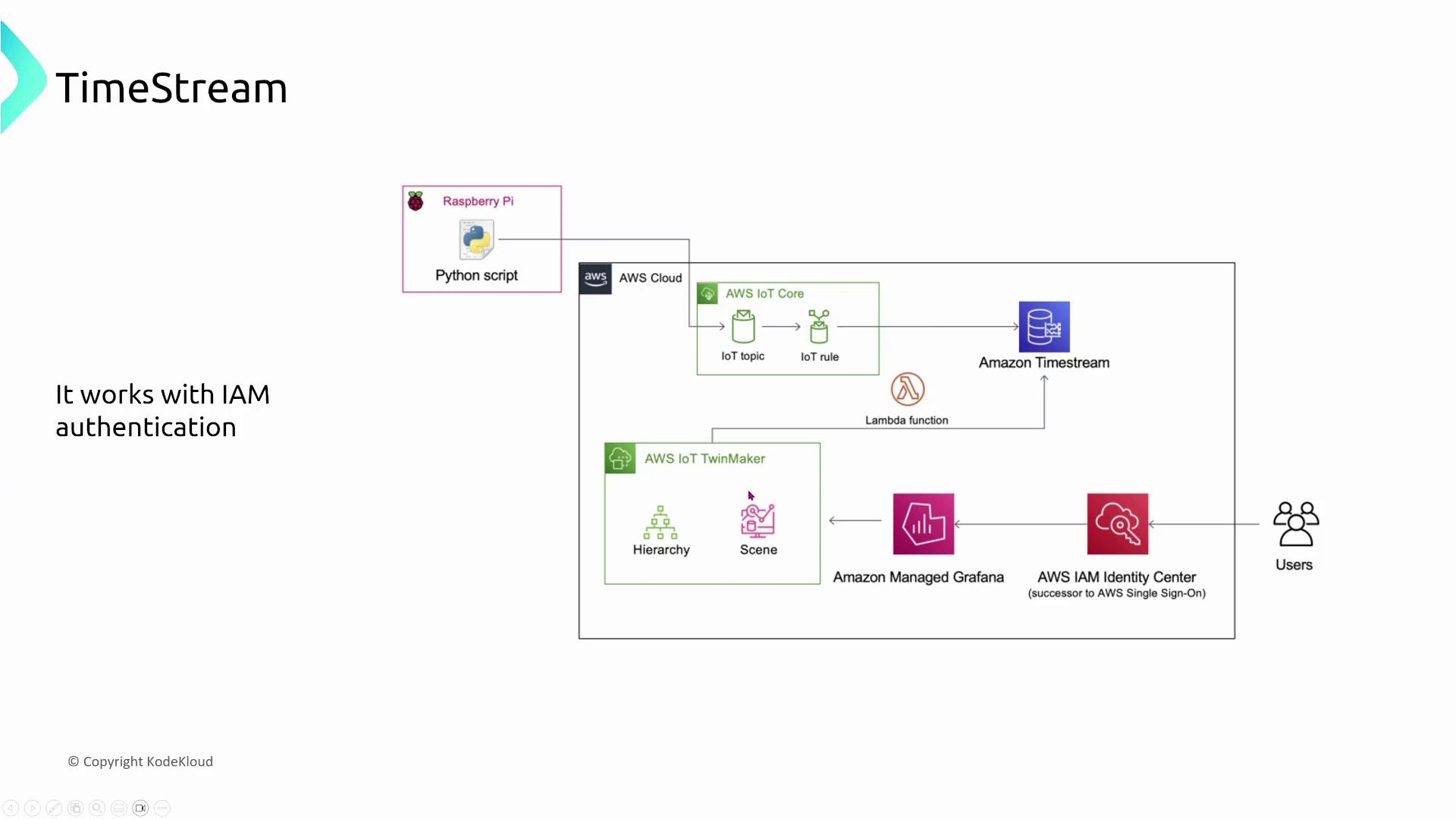
Moreover, Timestream supports secure network communications through VPC endpoints and adheres to standard firewall configurations.
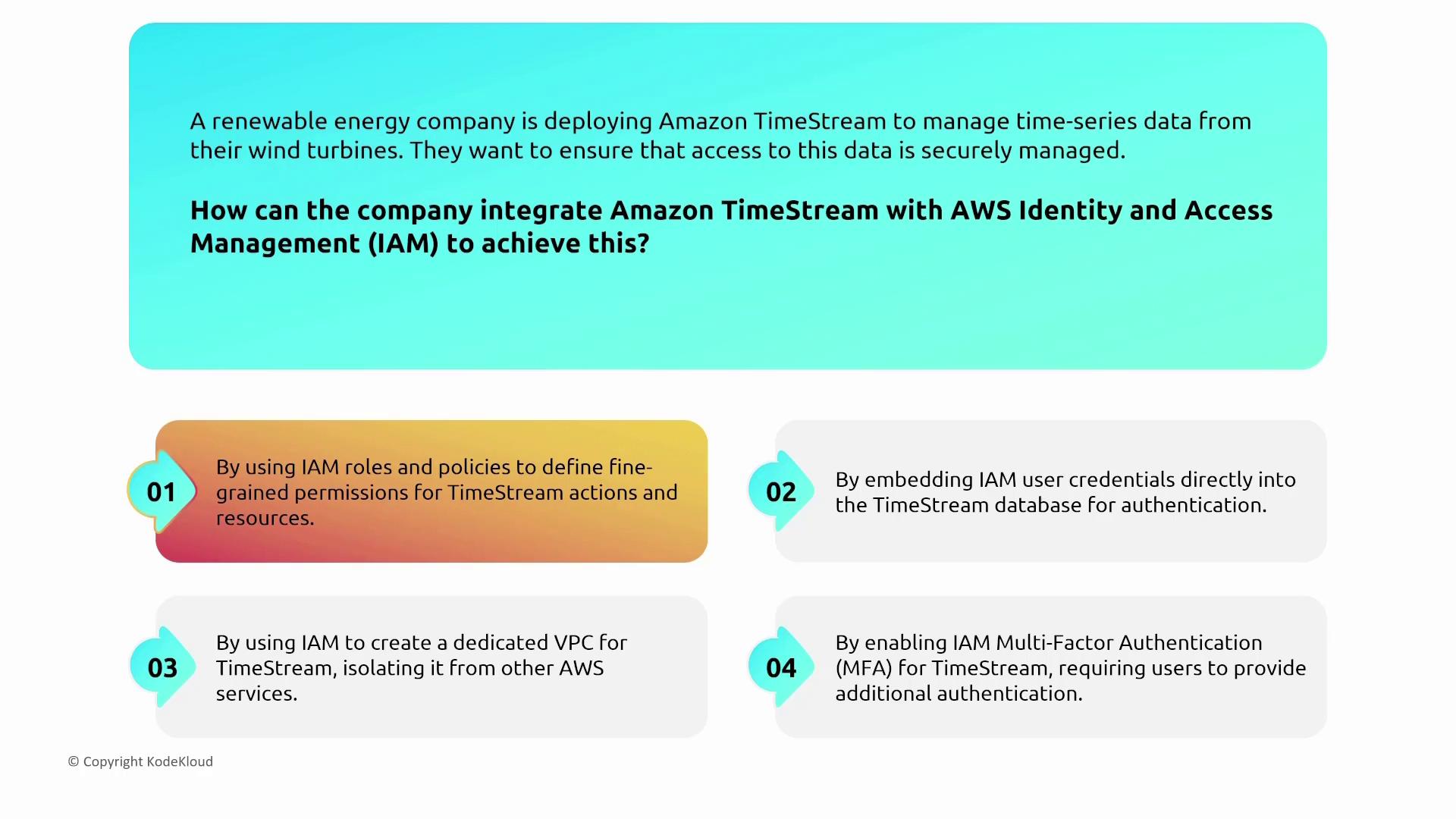
Security Tip
Always use VPC endpoints to isolate your database services and enforce standard firewall rules for tighter network security.
Timestream enforces encryption by default, ensuring data is secure during transit and while at rest.
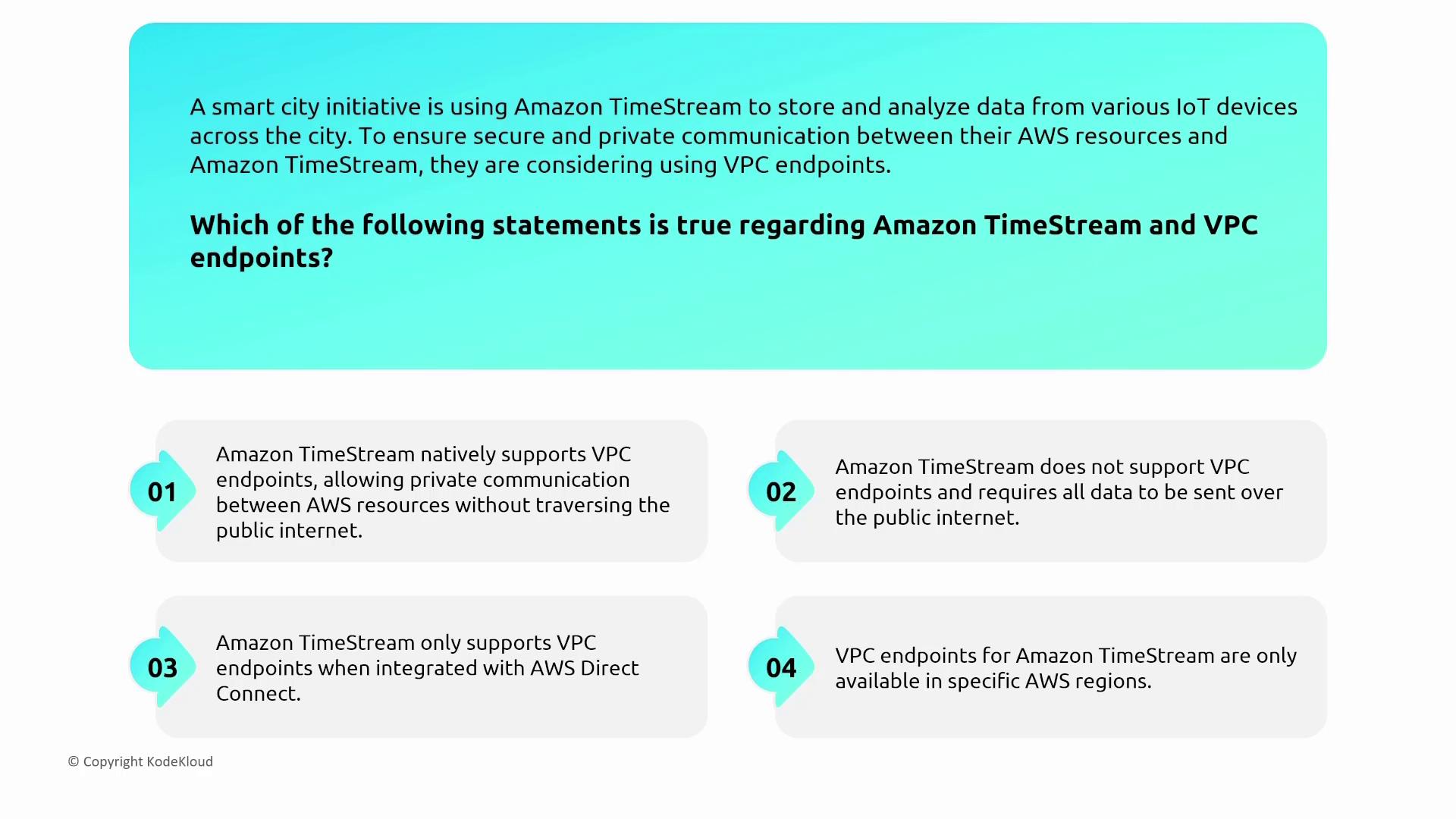
Additionally, Timestream integrates with CloudWatch and supports API calls for effective data reporting and monitoring. This feature is particularly useful for manufacturing companies that need to track the rate of incoming records—a critical performance metric.
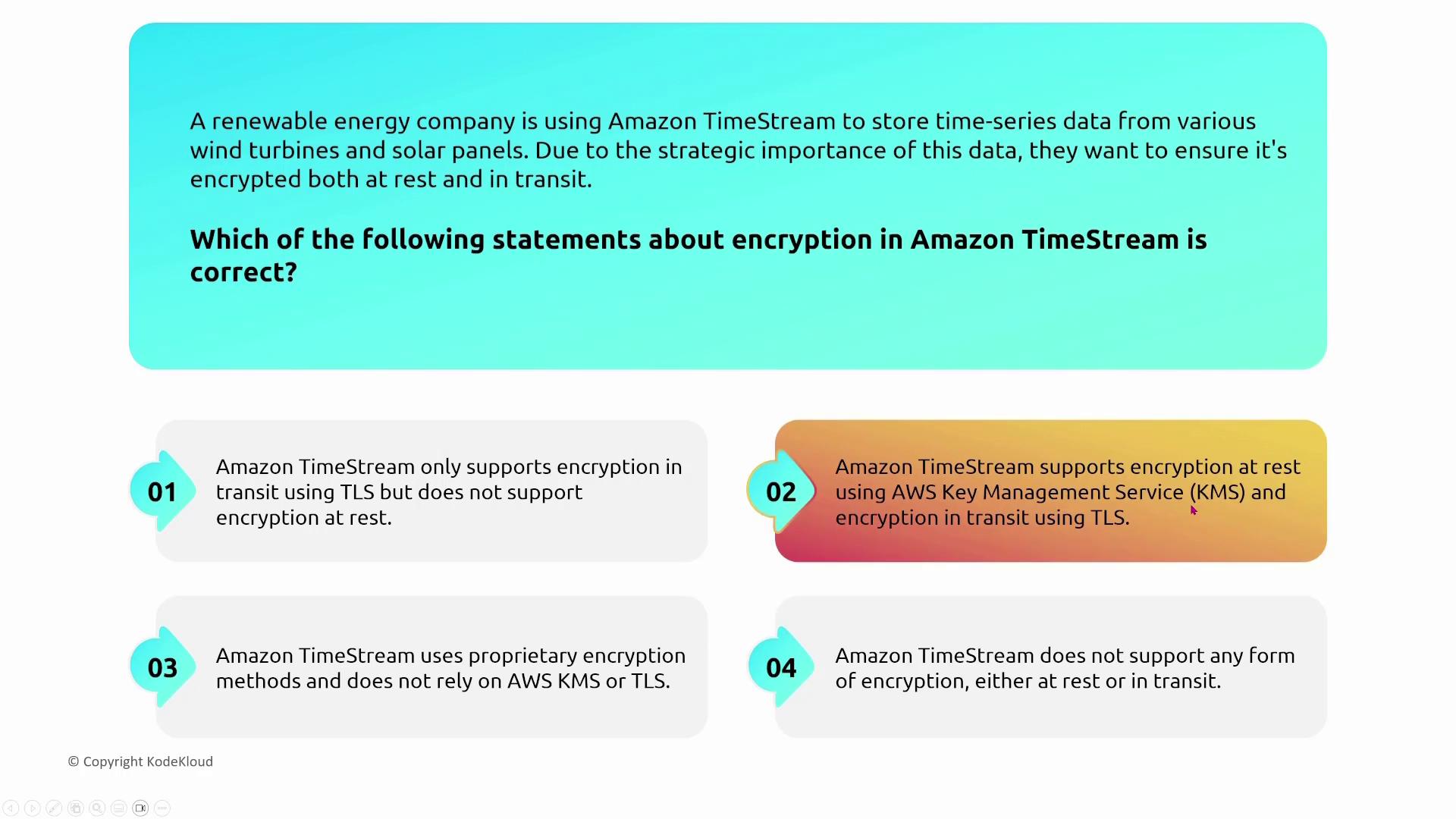
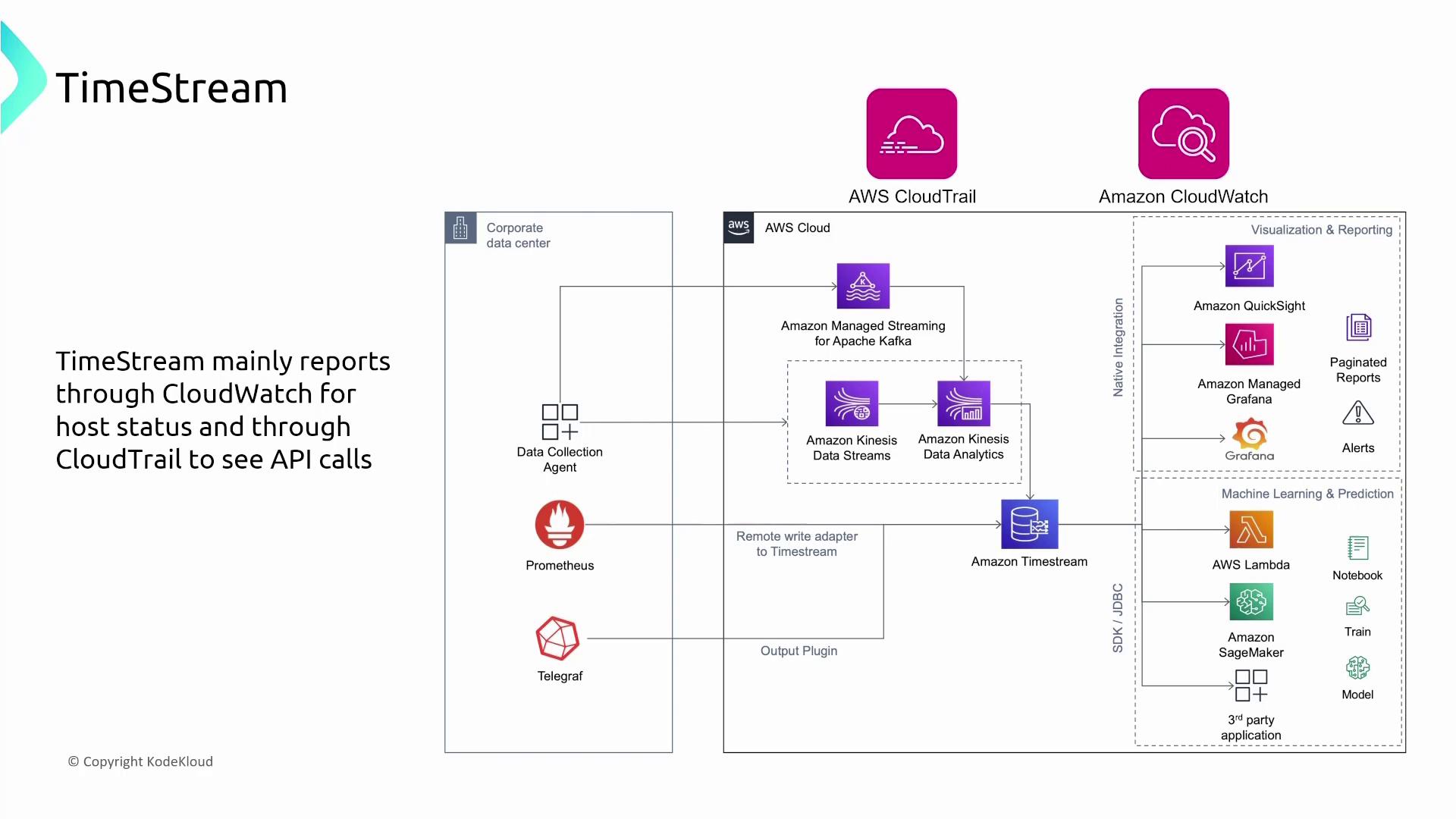
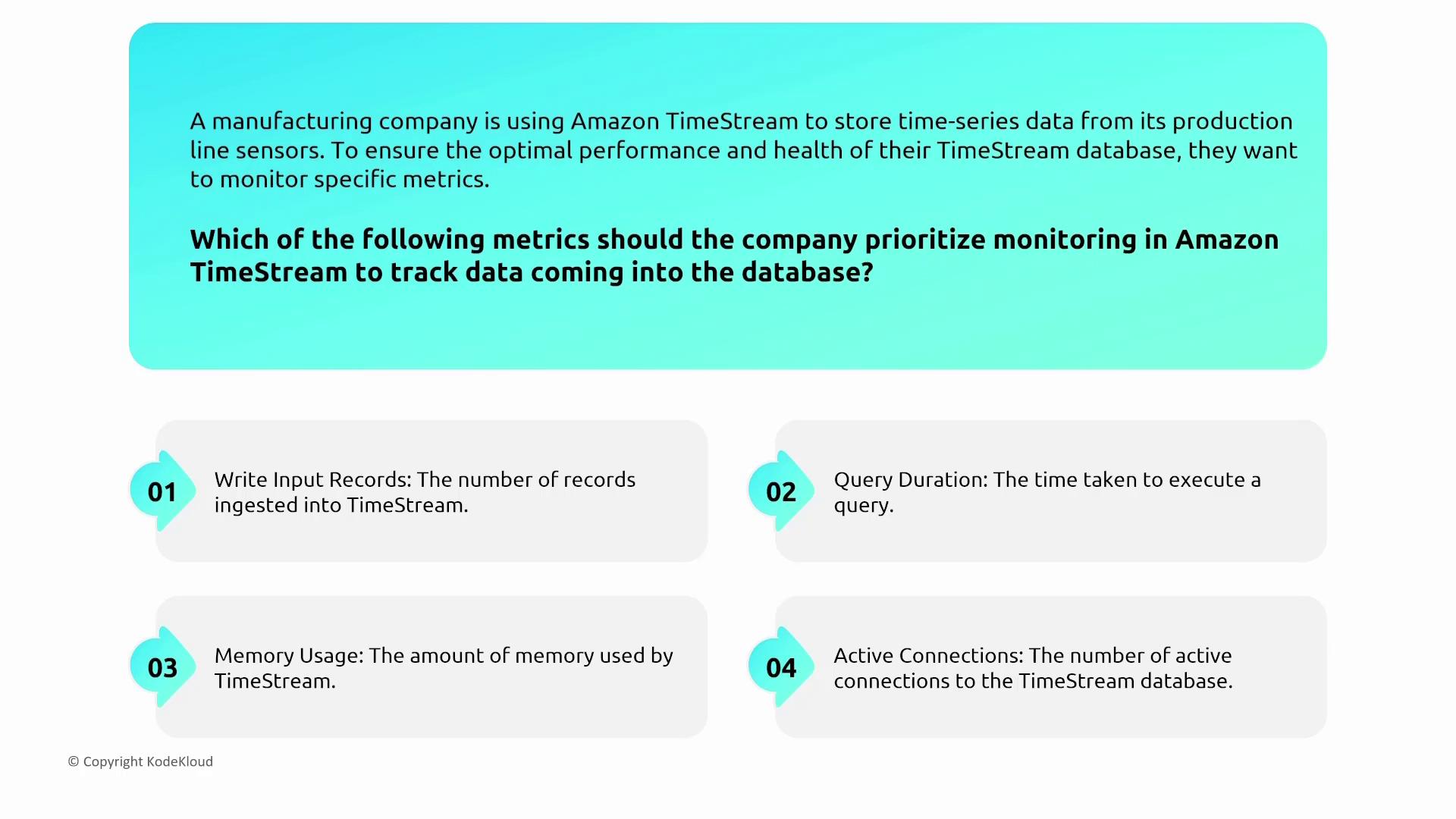
Summary
This article has provided an in-depth look at two critical AWS database services and their security features:
Amazon QLDB:
- Provides an immutable ledger with cryptographic verification and a complete history of changes.
- Integrates with IAM for granular access control and utilizes VPC endpoints for network security.
- Ensures data protection with encryption enabled by default, both at rest and in transit.
Amazon Timestream:
- Serves as a cost-effective, serverless time series database optimized for IoT and real-time analytics.
- Offers robust security through IAM integration, VPC endpoints, and default encryption.
- Leverages CloudWatch for monitoring key performance metrics, particularly the rate of incoming data records.
Understanding the unique features and security capabilities of these AWS services is crucial for designing secure, efficient, and scalable systems in today's complex technological landscape.
Thank you for reading. In our next article, we'll shift our focus from databases to application integration, auto-scaling, and other essential components of modern cloud architectures.
Watch Video
Watch video content